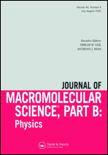
Journal of Macromolecular Science Part B-Physics
Scope & Guideline
Illuminating Trends in Macromolecular Physics
Introduction
Aims and Scopes
- Polymer Characterization and Properties:
The journal emphasizes the characterization of polymers, including their thermal, mechanical, optical, and electrical properties, using advanced methodologies such as spectroscopy, microscopy, and rheology. - Nanocomposites and Nanoengineering:
A significant focus is on the incorporation of nanomaterials into polymer matrices to enhance functionalities, such as mechanical strength, thermal stability, and electrical conductivity. - Biopolymer and Biocomposite Research:
Research on biopolymers and biocomposites, particularly their applications in biomedical fields and sustainable materials, is a core area of interest. - Polymer Processing Techniques:
The journal covers innovative processing techniques for polymers, including electrospinning, 3D printing, and various molding methods, to achieve desired material properties. - Smart and Functional Materials:
There is a growing interest in developing smart materials that respond to environmental stimuli, including temperature, pH, and light, for applications in drug delivery and sensors. - Theoretical and Computational Studies:
The journal encourages theoretical and computational approaches to understand polymer behavior, structure-property relationships, and molecular dynamics.
Trending and Emerging
- Sustainable and Green Materials:
There is a significant rise in research focused on sustainable and eco-friendly materials, particularly biopolymers and composites derived from renewable resources, driven by global sustainability goals. - Advanced Drug Delivery Systems:
Emerging themes in the development of smart drug delivery systems utilizing macromolecular carriers are increasingly prevalent, showcasing innovations in biocompatibility and controlled release mechanisms. - Machine Learning and Data-Driven Approaches:
The integration of machine learning techniques for predicting material properties and optimizing polymer formulations is gaining traction, reflecting a broader trend in materials science. - Functional Nanocomposites for Electronics:
The journal is witnessing an increase in studies on functional nanocomposites designed for electronic applications, such as sensors and energy storage devices, indicating a shift towards high-tech applications. - Interfacial and Surface Engineering:
Research focusing on interfacial properties and surface modifications of polymers to enhance performance in specific applications, including adhesion and compatibility, is on the rise.
Declining or Waning
- Conventional Polymer Blends:
Research focused on conventional polymer blends, particularly those without the integration of nanomaterials or advanced processing techniques, has seen a reduction in publications as the field moves towards more innovative composites. - Traditional Thermoplastic Elastomers:
The exploration of traditional thermoplastic elastomers appears to be waning, with fewer studies being conducted in favor of more novel materials that offer enhanced performance. - Basic Polymer Physics:
While foundational studies in polymer physics are essential, there has been a noticeable decrease in publications centered solely on basic polymer physics without application-driven research. - Low-Impact Environmental Studies:
Research themes focusing on low-impact environmental studies, particularly those lacking a strong connection to practical applications or advanced material solutions, have become less frequent.
Similar Journals
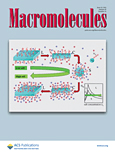
MACROMOLECULES
Leading the Charge in Inorganic and Organic ChemistryMACROMOLECULES, published by the American Chemical Society, is a premier journal in the fields of inorganic chemistry, materials chemistry, organic chemistry, and polymers and plastics. Since its inception in 1968, this influential journal has established itself as a vital resource for researchers, professionals, and students, showcasing cutting-edge research and advancements in the study of macromolecules and high-performance polymers. With a distinguished impact factor and consistently ranking in the top quartiles (Q1) across its relevant categories, MACROMOLECULES is recognized for its high-quality publications that contribute significantly to the scientific community. The journal is accessible in both print and electronic formats, facilitating rapid dissemination of knowledge. By providing a platform for innovative studies and groundbreaking discoveries, MACROMOLECULES continues to play a crucial role in shaping the future of materials science and polymer research.
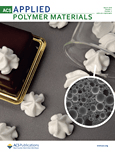
ACS Applied Polymer Materials
Elevating Knowledge in Polymer TechnologiesACS Applied Polymer Materials is a prestigious journal published by the American Chemical Society, specifically tailored for the dynamic fields of Organic Chemistry, Polymers and Plastics, and Process Chemistry and Technology. With its ISSN 2637-6105, the journal has rapidly established itself within the academic community, achieving a distinguished Q1 quartile ranking across multiple categories in 2023. This places it among the top-tier journals globally, reinforcing its critical role in disseminating groundbreaking research and innovation in polymer science. The journal is known for its rigorous peer-review process and publishes high-quality articles that are pivotal for researchers, professionals, and students eager to advance knowledge in polymer materials and their applications. Positioned to cover converging themes from 2019 through 2024, ACS Applied Polymer Materials embraces a wide scope of studies, from fundamental chemistry to practical engineering applications, thereby fostering significant advancements in material science. While it offers traditional access options, the journal's impact is reflected in its impressive rankings within Scopus, indicating its relevance and influence in the chemical engineering domain. Join the global community of innovators and discover the latest insights that continue to shape the landscape of applied polymer research.
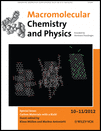
MACROMOLECULAR CHEMISTRY AND PHYSICS
Navigating the Intersection of Chemistry and PhysicsMACROMOLECULAR CHEMISTRY AND PHYSICS, published by WILEY-V C H VERLAG GMBH, is a prominent journal dedicated to advancing the fields of condensed matter physics, materials chemistry, organic chemistry, physical and theoretical chemistry, and polymers and plastics. With an impressive H-index and a Q2 ranking in various relevant categories for 2023, this journal serves as a crucial platform for researchers and professionals to publish their innovative findings and theoretical advancements from 1994 to 2024. The journal's commitment to high-quality research is reflected in its Scopus rankings, which highlight its significant impact within the scientific community. Although it does not currently offer open access, it remains an essential resource for those seeking to explore the intricacies of macromolecular science. With a growing global audience, MACROMOLECULAR CHEMISTRY AND PHYSICS continues to shape the future of materials and polymer research, making it a must-read for students, researchers, and industry professionals alike.

Polymers
Connecting research and application in polymer technology.Polymers is a premier journal published by MDPI, dedicated to advancing the field of polymer science and technology. This open-access journal, established in 2009, has quickly gained prominence in the academic community, serving as a vital platform for disseminating high-quality research articles, reviews, and communications in the realms of chemistry, polymers, and plastics. Based in Switzerland, with an impressive ranking in the Q1 quartile for both Chemistry and Polymer studies, Polymers boasts a significant impact factor, reflecting its rigorous peer-review process and esteemed editorial board. Researchers, professionals, and students alike benefit from the broad accessibility of content, allowing for a more extensive reach and engagement within the scientific community. As a key resource for the latest advancements and innovations in polymer research, Polymers continues to lead discussions, inspire collaborations, and foster the development of novel materials that shape various industrial applications.
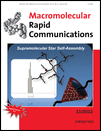
MACROMOLECULAR RAPID COMMUNICATIONS
Unleashing Innovation in Polymers and PlasticsMACROMOLECULAR RAPID COMMUNICATIONS, published by WILEY-V C H VERLAG GMBH in Germany, is an esteemed journal dedicated to the rapid dissemination of high-quality research in the fields of materials chemistry, organic chemistry, and polymers and plastics. With a remarkable 2023 impact factor securing its place in the prestigious Q1 category across three key disciplines, the journal ranks impressively within the top quartiles of the Scopus metrics, standing at 36th in organic chemistry and 35th in polymers and plastics. Although the journal does not offer open access options, its informative depth and innovative research make it an invaluable resource for researchers, professionals, and students seeking to stay abreast of the latest developments in macromolecular science. Covering a broad spectrum of topics from fundamental research to applications, MACROMOLECULAR RAPID COMMUNICATIONS aims to foster collaboration and inspire further advancements within the scientific community.

MACROMOLECULAR RESEARCH
Unlocking the Potential of Polymers WorldwideMACROMOLECULAR RESEARCH, published by the POLYMER SOC KOREA, is a premier journal dedicated to advancing the field of macromolecular science and polymer engineering. With its ISSN 1598-5032 and E-ISSN 2092-7673, this journal has emerged as a vital platform for researchers and professionals interested in the application and development of polymers across various domains. Based in South Korea and operating as an open-access resource since its inception in 2002, MACROMOLECULAR RESEARCH consistently ranks in the Q2 category across diverse fields such as Chemical Engineering, Materials Chemistry, and Organic Chemistry as per the latest 2023 metrics. Notably, it is recognized for its substantial contributions to polymery science, increasing its visibility and impact in global research. By providing a forum for original research articles, reviews, and innovative methodologies, this journal aims to foster collaboration and knowledge sharing among scientists, engineers, and students alike. Join a community that is at the forefront of polymer research by exploring the wealth of resources and cutting-edge studies featured in MACROMOLECULAR RESEARCH.
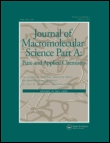
Journal of Macromolecular Science Part A-Pure and Applied Chemistry
Elevating Standards in Chemistry Research and InnovationWelcome to the Journal of Macromolecular Science Part A - Pure and Applied Chemistry, a distinguished publication dedicated to advancing the understanding of macromolecular science, encompassing critical areas such as polymers, materials chemistry, and composites. Published by Taylor & Francis Inc, this journal has firmly established its place within the scientific community, evident from its ranking in the Q2 and Q3 quartiles across various categories in the latest assessments, including Polymers and Plastics as well as Ceramics and Composites. With a commitment to providing high-quality peer-reviewed content, the journal aims to facilitate knowledge exchange and innovation among researchers and practitioners from around the globe. The absence of open access underscores the journal's commitment to maintaining rigorous editorial standards while remaining accessible to its readership. As the journal converges through valuable research contributions from 1992 to 2024, it continues to be a pivotal resource for professionals and students seeking to explore the latest advancements and applications in the field of macromolecular science.
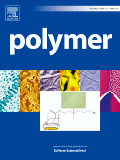
POLYMER
Fostering Excellence in Polymer ResearchPOLYMER, an esteemed journal published by Elsevier Science Ltd, stands at the forefront of polymer science, presenting cutting-edge research that encompasses the realms of Materials Chemistry, Organic Chemistry, and Polymers and Plastics. With a remarkable impact factor reflecting its significance in the academic community, POLYMER has been a vital resource since its inception in 1960, contributing to a converged body of knowledge through to 2024. Rated Q1 in all relevant categories as of 2023, and boasting impressive Scopus rankings, this journal not only facilitates advanced discussions in polymer synthesis, characterization, and applications but also serves as a critical platform for collaborative research among scholars, professionals, and students. While it offers content primarily via subscription, POLYMER remains dedicated to fostering innovation and excellence in the field, making it an essential read for anyone passionate about polymer science.

Journal of Polymer & Composites
Advancing Innovations in Polymer Science and Composite Materials.Journal of Polymer & Composites, with ISSN 2321-8525 and E-ISSN 2321-2810, is an esteemed academic journal published by STM JOURNALS, dedicated to the advancement of knowledge in the rapidly evolving fields of polymer science and composite materials. The journal serves as a pivotal platform for researchers and professionals, offering cutting-edge research articles, reviews, and case studies that explore innovative developments and applications in polymer chemistry, material science, and engineering. Although currently lacking an impact factor citation, the journal aims to foster dialogue among academia and industry partners, addressing the latest trends and breakthroughs that drive the field forward. With a commitment to scholarly excellence, the Journal of Polymer & Composites is positioned as an essential resource for enhancing the understanding of polymer composites and their multifaceted applications. Notably, STM JOURNALS' reputation for quality publications underscores the journal’s importance in facilitating impactful research and educational initiatives worldwide.

POLYMER BULLETIN
Illuminating the Path of Polymer DevelopmentsPOLYMER BULLETIN is a prominent journal in the field of polymer science, published by SPRINGER in Germany. Established in 1978, this peer-reviewed journal focuses on the latest research and developments in polymer chemistry, materials science, and condensed matter physics, boasting a commendable impact factor indicative of its rigorous academic standards. With a Q2 ranking in multiple categories including Chemistry (Miscellaneous), Condensed Matter Physics, Materials Chemistry, and Polymers and Plastics, POLYMER BULLETIN serves as an essential resource for researchers, professionals, and students aiming to stay abreast of innovative findings and methodologies within these interdisciplinary landscapes. Although the journal does not currently offer open access, it provides invaluable insights and data that significantly contribute to the advancement of polymer science. For more information and to access published articles, visit the journal's page on the Springer website.